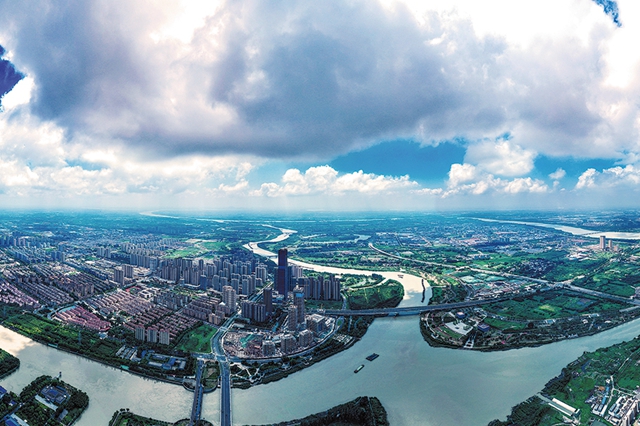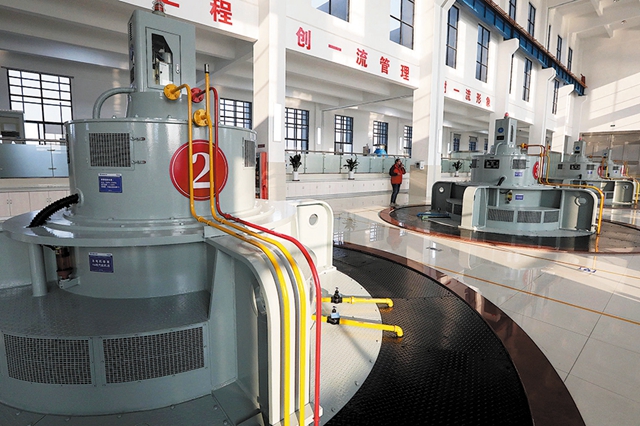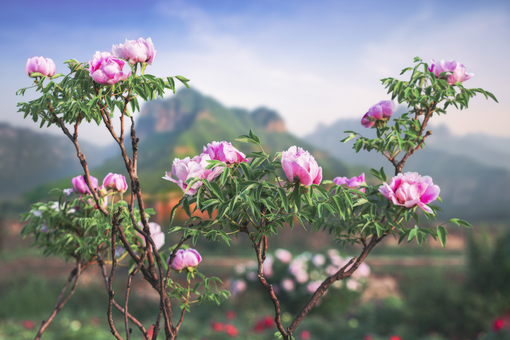Water diversion project brings many benefits
(chinadaily.com.cn)| Updated : 2023-11-24
Print Print
Water is drawn for the eastern route of the South-to-North Water Diversion project from the lower reaches of the Yangtze River at Jiangdu in Yangzhou city, Jiangsu province. YU XING/FOR CHINA DAILY
Relief provided for eastern areas long plagued by drought
The sun shone brightly as my father carried water from a small pond in a metal bucket, scrambling to fill a makeshift tank on our tractor bed.
After days of scorching temperatures, the pond was one of the few water bodies in our village that still had supplies, but the water level was low. This meant my father had to walk a long way on a slippery slope to reach the water.
As it was so hot, he removed his shirt, and sweat streamed down his face. His shoulders and part of his back were sunburned.
At that time in the mid-1990s, I was just a young boy, and although I was there to help, I cannot recall exactly what I did.
This childhood memory suddenly returned to me this month as I stood in a control center for the eastern route of the South-to-North Water Diversion Project.
Mo Zhaoxiang, head of the information center at Jiangsu Water Source Co in Nanjing, capital of Jiangsu province, said that with a simple click of a computer mouse, water pumps up to 400 kilometers away will start operating in just five seconds.
Pumping stations in Jiangsu along the route can deliver 100 cubic meters of water per second all the way to the north.
I was on an interview tour ahead of the 10th anniversary of the eastern route starting operation on Nov 15, 2013.
Water is drawn for this route from the lower reaches of the Yangtze River at Jiangdu in Yangzhou city, Jiangsu. The ancient Beijing-Hangzhou Grand Canal and its parallel rivers are used to divert water to northern China through a series of pumping stations.

The project's operation room in Huai'an, Jiangsu. YIN CHAO/FOR CHINA DAILY
One of the destinations water is diverted to is my hometown of Weihai in the most easterly part of Shandong province.
Facing the sea in all directions but the west, Weihai was once plagued by a water shortage.
The makeshift tank on our tractor bed, which was made from thin plastic, could only hold about 5 cu m of water. After filling it up, my father drove the tractor to our farmland about 2 kilometers away to water corn seedlings, which were severely parched due to persistent drought.
There was no cover for the tank, so after bumping along a rugged country road for about 10 minutes, we had lost at least 0.5 cu m of water.
Each of the corn seedlings on our 0.13 hectares of farmland could only be given water from two large ladles made from gourds.
My father and I were not alone in fetching water from the small pond, and it was quite a chaotic scene. There were so many tractors that it took at least five minutes to escape the traffic jams, although the size of the pond could be compared to that of a basketball court.
Such scenes were familiar to residents in Weihai, who had been fighting drought for generations.
Key points
On a big screen at the water diversion project's control center, a large electronic map shows key points on the eastern route. One end of the route is the Mishan Reservoir in Weihai, which I am familiar with, as my grandfather-in-law helped build it.

 Statistics: Fun facts about Heze's peonies
Statistics: Fun facts about Heze's peonies  Cultural hub of Jining revitalizes traditional culture
Cultural hub of Jining revitalizes traditional culture  Peonies bloom in Heze
Peonies bloom in Heze